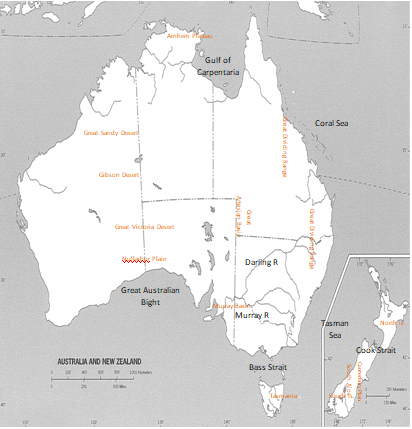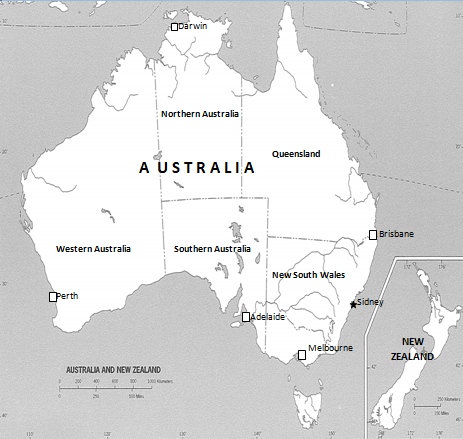Map comparison
Agricultural production and mineral extraction are among Australia’s economic backbone. With regards to agriculture, no other state within the pacific realm enjoys the benefits stemming from this sector other than Australia. To them this is a pipe dream. Australian farmers are a ‘jack of all trades’ (MacLeod and Jones 677). They rear domestic animals and practice farming.
To this end they have a favorable climate to boast about. However, as depicted in figure 11-5, this climate is biased towards the territory of New South Wales, extending along the borders anticlockwise towards Western Australia forming an inverted ‘U.’
The same pattern recurs for minerals though with disjointed areas at some parts of Northern and Western Australia. Among the minerals mined include gold, Iron ore, silver, coal, and copper. On comparing this map with the spatial distribution of population map (G-9) one thing emerges: the population density follows the same path (Kimble 510).
On analyzing the spatial population distributions of both New Zealand and Australia with respect to climatic patterns, several common findings can be drawn. Basically, a population will always be drawn where the climatic conditions are favorable for agricultural production.
For instance, in Australia, the population density within the central part is less. On correlating this with the region’s climate it is evident that the area is located on a dry climate. On the other hand, at New South Wales where the population density is high it enjoys temperate climate. With regards to New Zealand the area receives adequate rain throughout the year (humid equatorial climate with no dry season).
However, the physical geography of the region is what now dictates the spatial population distribution. Both these countries follow the same pattern of population distribution; most settlements are skewed along the coastal lines (Schaefer 230).



Key:
- Broken Hill;
- Kambalda;
- Mt Isa;
- Conation Hill;
- Canterbury Plain.
Works Cited
Kimble, Hebert. “The Inadequacy of the Regional Concept” London Essays in Geography 2.17 (1951): 492-411. Print.
MacLeod, George, and Jones Mother. “Renewing The Geography of Regions.” Environment and Planning 16.9 (2001): 669-800. Print.
Schaefer, Frankline. “Exceptionalism in Geography: A Methodological Examination.” Annals of the Association of American Geographers 43.3 (1953): 226-245. Print.